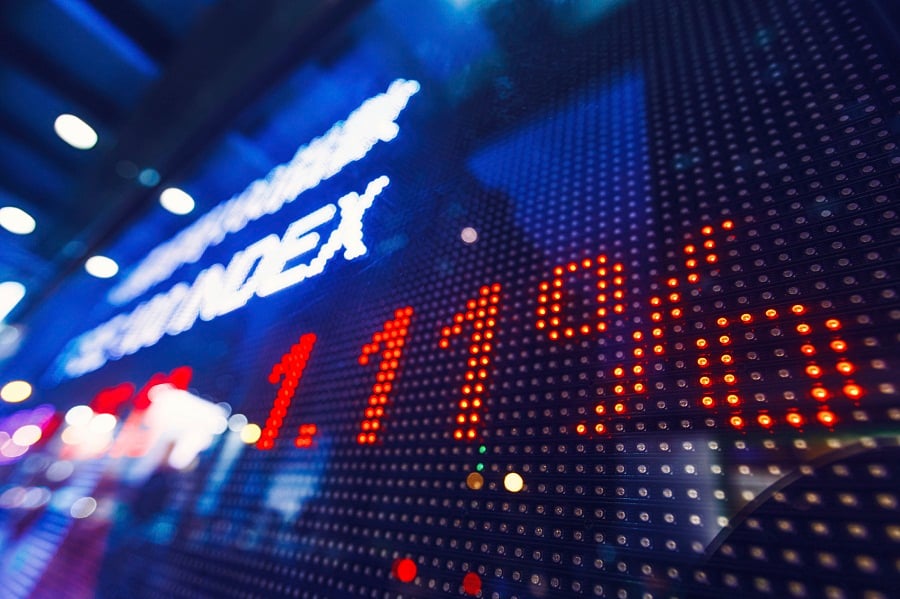Seeing three major U.S. stock markets indexes all hit record highs for the first time since 1999 has given pundits and market watchers plenty to analyze, but fear is not yet part of the equation.
“Valuations are getting high, but they can get even higher in this environment,” said Doug Cote, chief market strategist at Voya Financial.
“Compared to bonds, equities actually look cheap, and U.S. bonds look cheap compared to the negative yields around the world right now,” he added. “My theme is that the expensive can keep getting more expensive, and you have to go somewhere so you might as well go to global equities and U.S. bonds.”
The fact that this week saw the Dow Jones Industrial Average, the S&P 500 and the Nasdaq Composite Index
all register new highs is not what concerns most analysts these days, despite the fact that the last time this happened the equity markets rolled into an
extreme freefall in early 2000.
“You can chalk the stock market performance up to basic valuation principles,” said Bob Rice, chief investment strategist at Tangent Capital.
Like Mr. Cote, Mr. Rice ties the performance of stocks to the unprecedented global monetary policies that have created $2.7 trillion worth of negative-yielding sovereign bonds.
“The level of interest rates around the world is just mind blowing, which is why you have to think about stock market performance from a classic, old-school discounted-cash-flow point of view,” Mr. Rice said.
In essence, stock prices are climbing not because of expected higher earnings, but because of the falling value of the risk-free return, as measured by government bonds.
“The stock market isn't predicting boom times or higher earnings, but a given amount of earnings is worth more and more as the risk-free rate declines,” Mr. Rice said.
Of course, the flipside of what might seem like nirvana for the moment, Mr. Rice added, is that a stock market dependent on low and falling rates will “get crushed when the Fed raises rates.”
But, in the meantime, you have to
stay on the ride and take all you can get, according to Paul Schatz, president of Heritage Capital.
“The market is definitely not cheap, which is what the bears are still hanging their hats on, but this isn't 1999 when we had expensive markets and investors were falling over themselves to buy stocks that were priced in eyeballs instead of earnings,” he said.
Mr. Schatz cited stock market pullbacks in February and again in
June following the Brexit vote as examples of the resilience of stocks right now.
Contrary to 2014 and 2015 when the broad stock indexes kept crawling forward while some sectors fell way behind, the stock market this year has been showing strong momentum, he said.
“The thrusts off the February low and the low following the Brexit vote were historic in nature,” Mr. Schatz added. “That kind of performance is only seen at the beginning of major moves to the upside. It will take a long time for that kind of power to dissipate.”
While he does expect to see a “shallow” market pullback prior to the November presidential election, Mr. Schatz is holding firm to his mantra first stated in 2010 that the Dow is on a track toward 20,000, which is almost 8% above where the index is currently trading.
Meanwhile, there are those who are already looking past the current market valuations to try and keep things in a longer-term perspective.
“As an adviser, my most important function is to manage investor behavior and try to save them from stock tips from friends and colleagues, and landscapers and the like,” said Kashif Ahmed, president of American Private Wealth.
“When markets are high every day, everyone becomes and expert, until the markets eventually, and inevitably, prove them wrong,” he added.
Eric Wiegand, senior portfolio manager at U.S. Bank's Private Client Reserve, is also just shy of fully bullish on the stock market at current levels. But he does see some evidence that this isn't the peak.
“We are encouraged that we are at these levels and we're still seeing participation broaden out [among stocks], which is an improvement over the narrow advance of 2015 that was frustrating for some investors,” he said.
Getting back to comparisons to 1999, Mr. Wiegand said he is encouraged by the general lack of euphoria among investors this time around.
“We haven't seen investors really pouring money into equities, and this certainly isn't a loved advance, which suggests it can be sustained,” he said. “Right now we're not broad buyers of anything, but we are finding opportunities as this becomes more of a stock-picker's market.”







